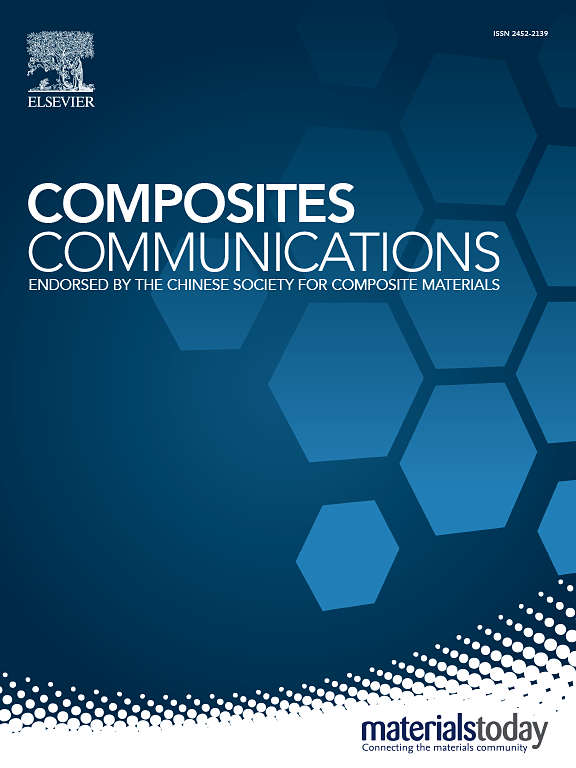Scanning active microwave thermography for inspection of defects in bonded fiber reinforced polymer joints
IF 6.5
2区 材料科学
Q1 MATERIALS SCIENCE, COMPOSITES
引用次数: 0
Abstract
Defects at the adhesive layer of bonded fiber-reinforced polymer (FRP) joints can compromise their structural strength and ductility, necessitating effective non-destructive evaluation (NDE) method. This study proposes scanning active microwave thermography (AMT) as an efficient and rapid NDE technique to visualize interfacial defects at bonded FRP joints. First, multi-physics numerical simulations were conducted, which agrees well with experimental results in thermal response. The simulation demonstrated the formation of an electric field concentration at the specimen edges. Second, 14 bonded FRP joints with various defect shapes, sizes, locations, and plate thicknesses were tested under AMT. Tests show that AMT can effectively detect interfacial defects in FRP joints with a diameter greater than 5 mm when carbon FRP (CFRP) is facing the AMT energy. As a comparison, when glass FRP (GFRP) are facing the AMT energy, it cannot be heated by AMT but the defect can still be detected by AMT, though it is not clear and accurate, because the bottom layer CFRP can be heated, which well explained the edge effects observed in test. Finally, a scanning AMT system was developed and used to visualize the interfacial defects at bonded FRP joints in a continuous manner, which exhibits high efficiency – defects can be inspected at a speed of 20 mm/s.
扫描有源微波热成像技术在纤维增强聚合物接头缺陷检测中的应用
纤维增强聚合物(FRP)接头的粘结层缺陷会影响其结构强度和延性,因此需要有效的无损检测方法。本研究提出扫描有源微波热成像(AMT)作为一种高效、快速的无损检测技术,用于观察粘结FRP接头的界面缺陷。首先,进行了多物理场数值模拟,结果与实验结果吻合较好。模拟结果表明,在试样边缘形成电场集中。其次,在AMT下测试了14个不同缺陷形状、尺寸、位置和板厚的粘结FRP接缝。试验表明,当碳纤维FRP (CFRP)面对AMT能量时,AMT可以有效检测直径大于5mm的FRP接缝的界面缺陷。相比之下,当玻璃玻璃钢(GFRP)面对AMT能量时,AMT不能加热,但由于底层CFRP可以加热,AMT仍然可以检测到缺陷,虽然不清晰和准确,这很好地解释了测试中观察到的边缘效应。最后,开发了一种扫描AMT系统,并将其用于连续可视化FRP接缝界面缺陷,该系统具有很高的效率-可以在20 mm/s的速度下检测缺陷。
本文章由计算机程序翻译,如有差异,请以英文原文为准。
求助全文
约1分钟内获得全文
求助全文
来源期刊

Composites Communications
Materials Science-Ceramics and Composites
CiteScore
12.10
自引率
10.00%
发文量
340
审稿时长
36 days
期刊介绍:
Composites Communications (Compos. Commun.) is a peer-reviewed journal publishing short communications and letters on the latest advances in composites science and technology. With a rapid review and publication process, its goal is to disseminate new knowledge promptly within the composites community. The journal welcomes manuscripts presenting creative concepts and new findings in design, state-of-the-art approaches in processing, synthesis, characterization, and mechanics modeling. In addition to traditional fiber-/particulate-reinforced engineering composites, it encourages submissions on composites with exceptional physical, mechanical, and fracture properties, as well as those with unique functions and significant application potential. This includes biomimetic and bio-inspired composites for biomedical applications, functional nano-composites for thermal management and energy applications, and composites designed for extreme service environments.
 求助内容:
求助内容: 应助结果提醒方式:
应助结果提醒方式:


